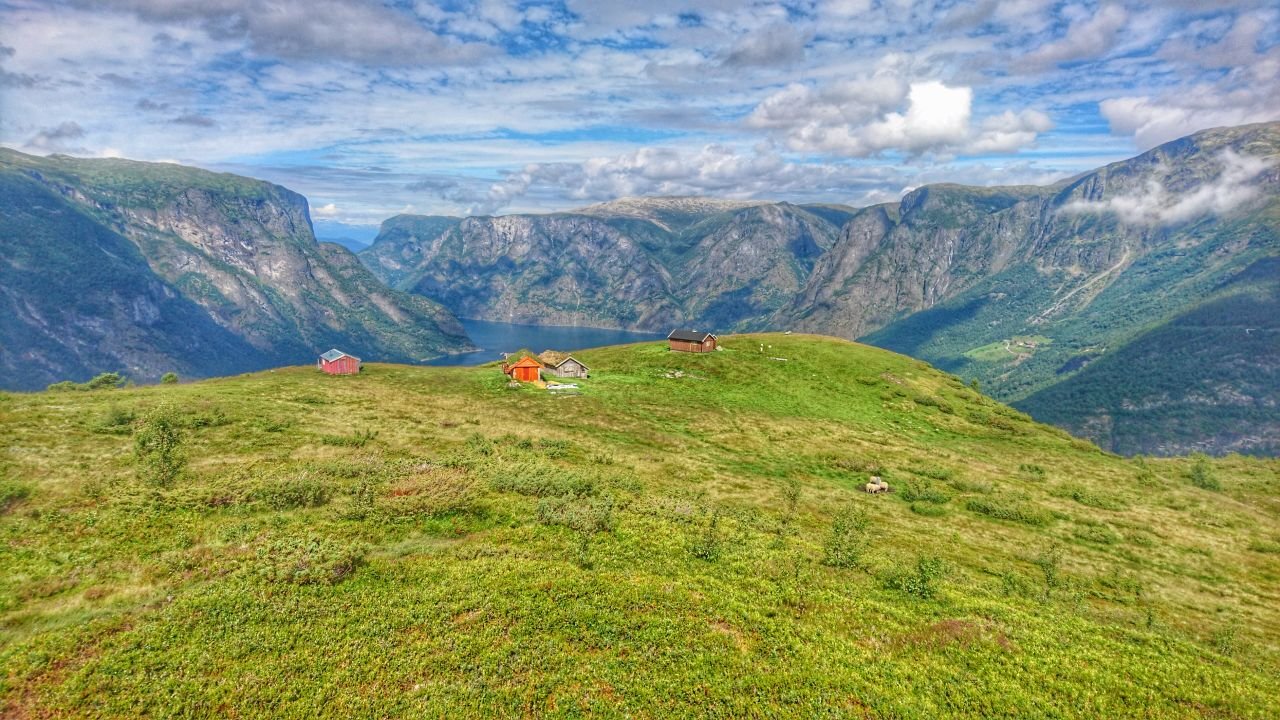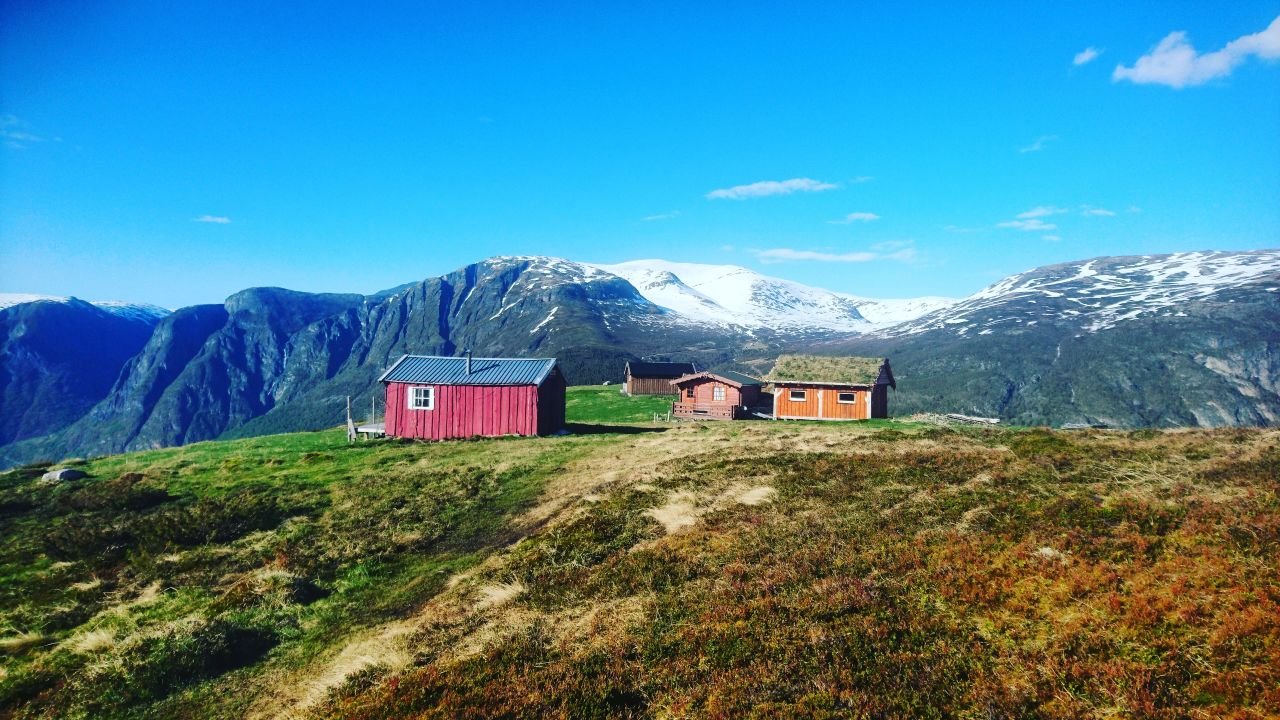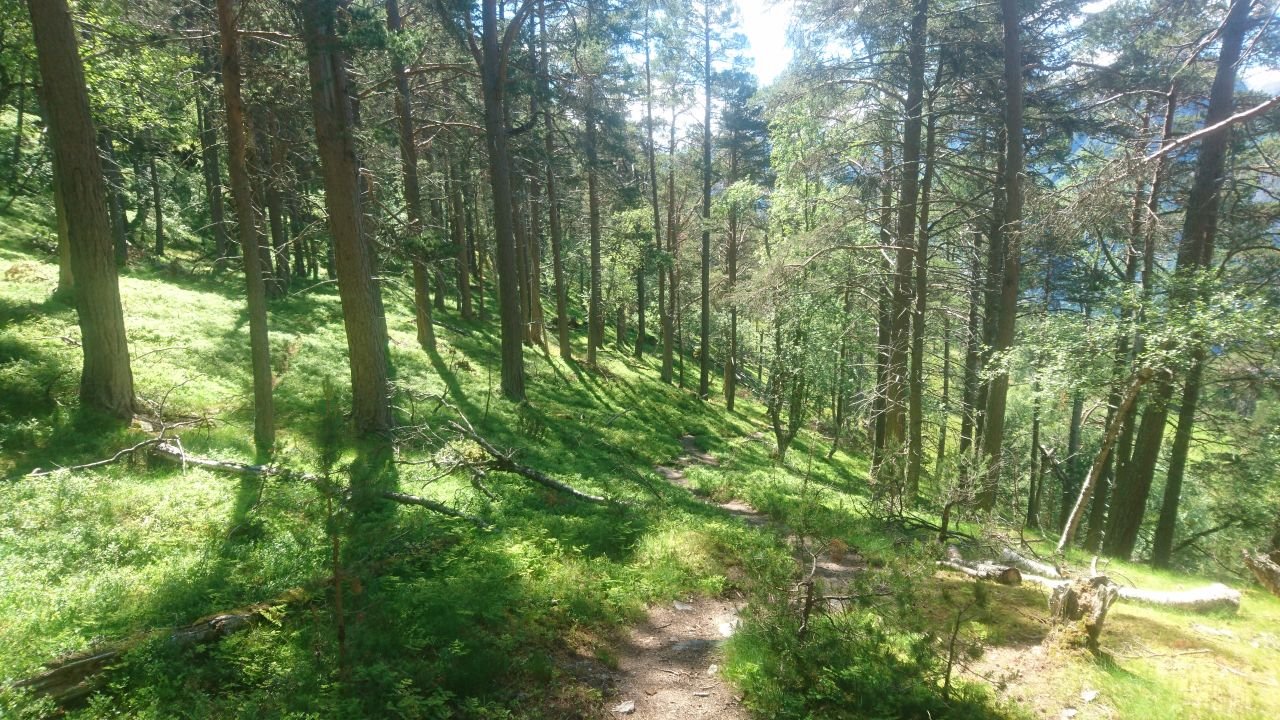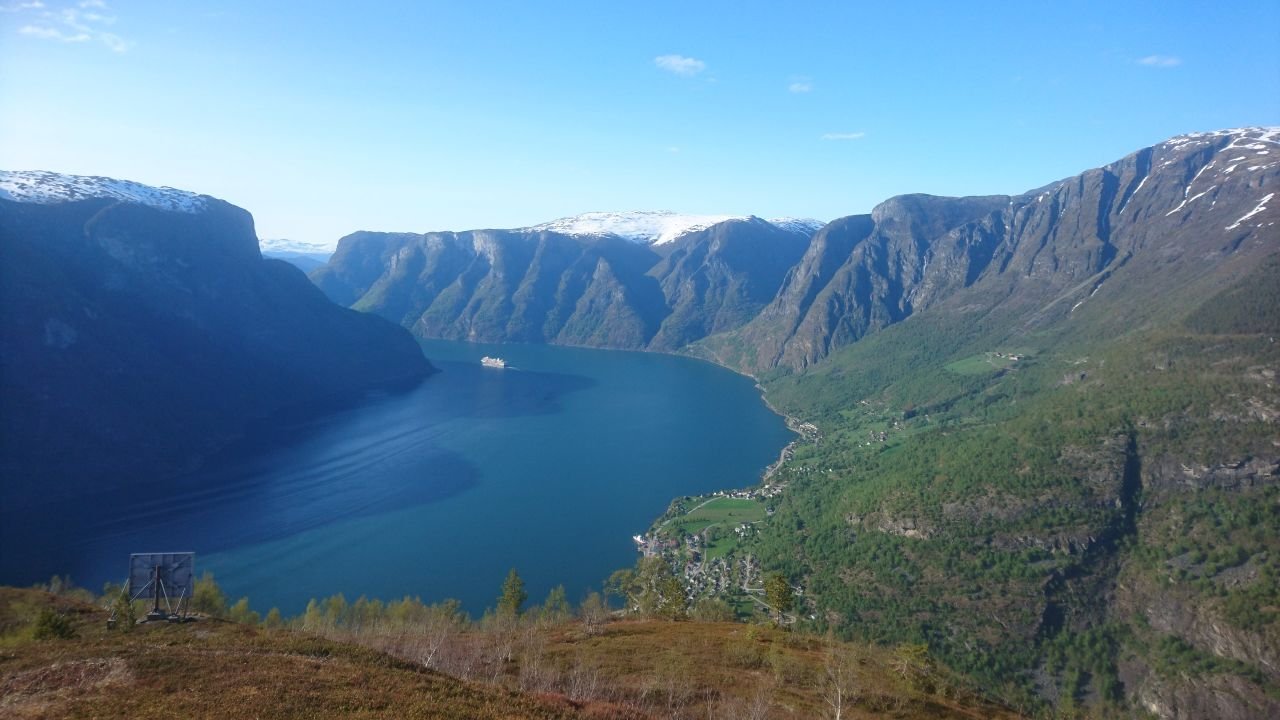Hovdungo
Demanding
Type: Hiking
Length: 6,4 km
Duration: 3 hours
Season: April-November
The walk is signposted and partly marked, and it alternates between dirt road, tractor road and clearly visible path. Most of the walk is in pine forest before the highest part goes through mountain vegetation with heather and mountain birch.
From the car park at Vikesland, the tour starts on a soft gravel road. After approx. 1 km there is a fork in the road, follow the arrow signs that point you further towards Hovdungo along a tractor road with a good incline. After approx. 300 m on the tractor road, you should take a path on the left edge, from here it is a relatively steep climb until you reach Klantadokki, which is the highest point on the trip. The last part is slaughtered until one reaches the embankment around Hovdungo, which lies at 780 m above sea level. Here you get a view of the Aurlandsfjord and the surrounding mountains.
From the stølsvollen, you can walk on for 500 m to the viewpoint Berget 808 m above sea level, where you can look into Vassbygdi towards Aurlandsdalen and get a good overview of the area around Prest, Stegastein and Turlifossen. If you want a longer trip, it is possible to continue to Hovdungovarden (1,243 m) or Blåskavlavarden (1,443 m).
PS: Stay on the trail! The mountain area has many "joers" (cracks in the ground) which can be difficult to see in the terrain. Many of these can be very deep and can be fatal to fall into.
Good trip! We hope you will enjoy one of the most beautiful fjord areas in the world, and help us take care of nature here. See point below
Untraceable traffic
Clean up after yourself and take all waste with you, including disposable grills and wet wipes.
In the outback, you can count as long as you are at least 150 meters from the nearest house or cabin. Open meadows in the lowlands are often inland. You can only camp there by agreement with the landowner. Use recommended campsites.
Lighting bonfires in forests and outlying areas is prohibited from April 15 to September 15, except in places such as the edge of a lake, where the risk of fire is minimal. Use established campfire sites and avoid lighting fires directly on rocky outcrops so that the rock cracks. Put out the fire and clean up after yourself before you leave.
Show consideration for grazing animals and wild animals. Keep your dog on a lead and close the gates. Wild reindeer are particularly vulnerable in late winter and spring.
Where there is no toilet, dig a hole at least 30 m from the path, building or washbasin. Toilet paper and wet wipes are rubbish that should be thrown in the rubbish bin.
Follow established trails - so wild reindeer and other shy animals don't have to meet people everywhere. Avoid cutting corners or blazing new trails.
Do not disturb animal and bird life. Observe animals and birds from a distance, using binoculars.
Cairns are signposts that help you follow the route. Do not build new cairns, as this can lead people astray. Do not remove stones from old cairns. They are cultural monuments.





